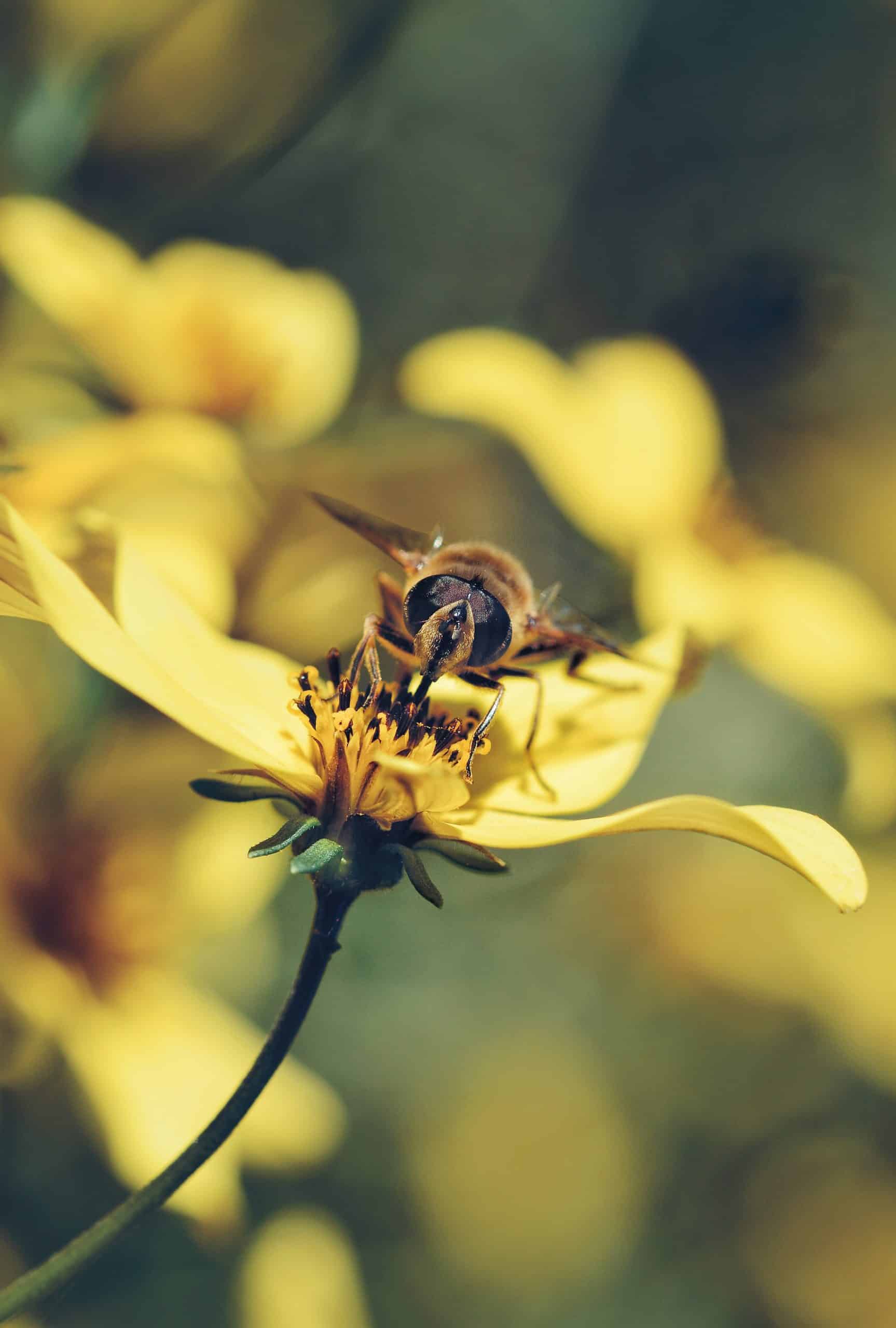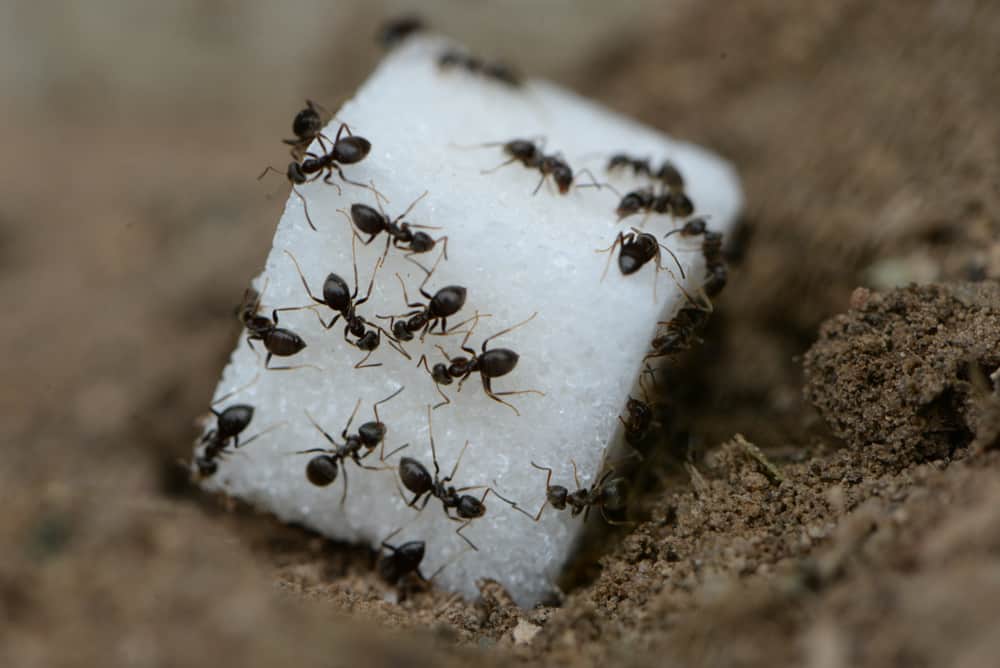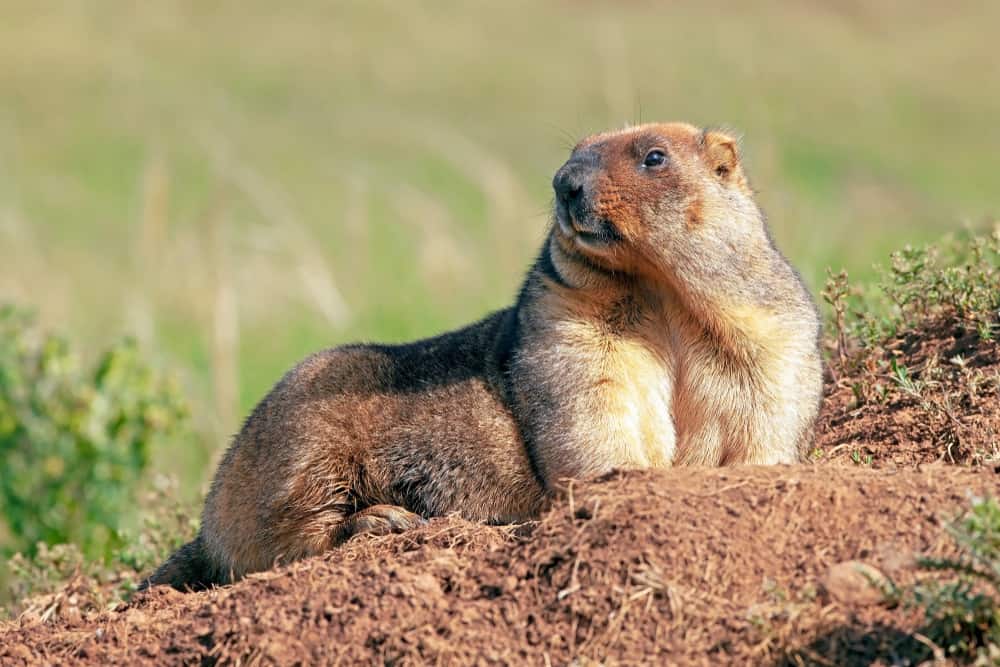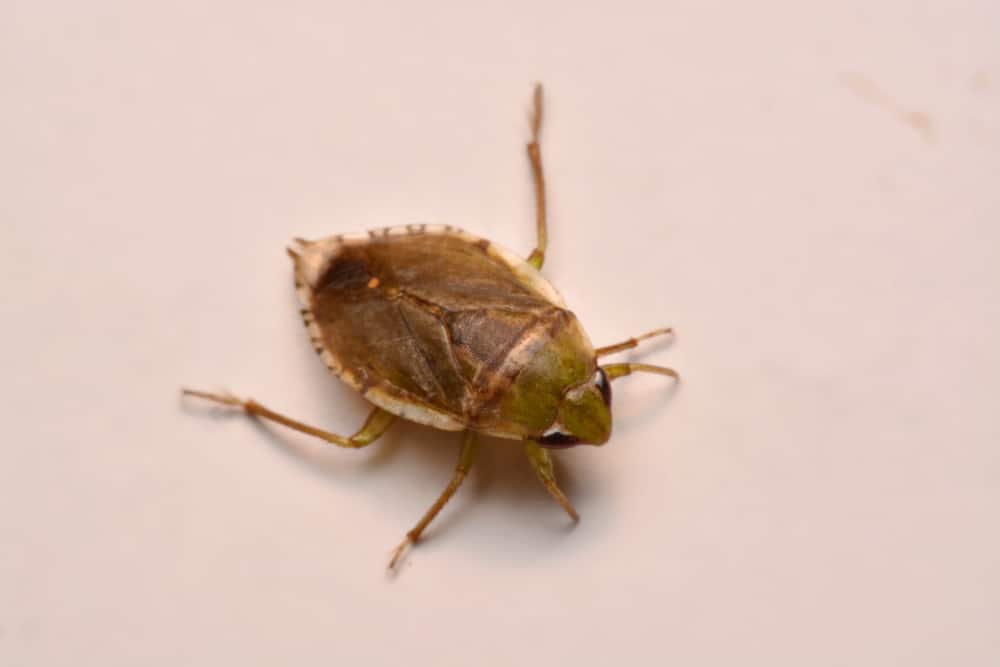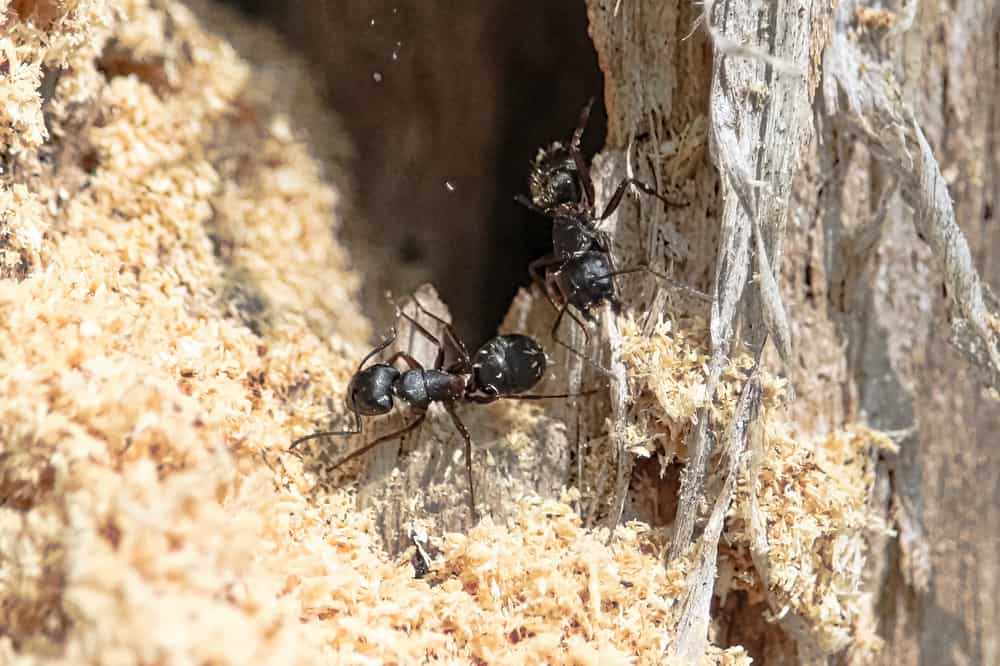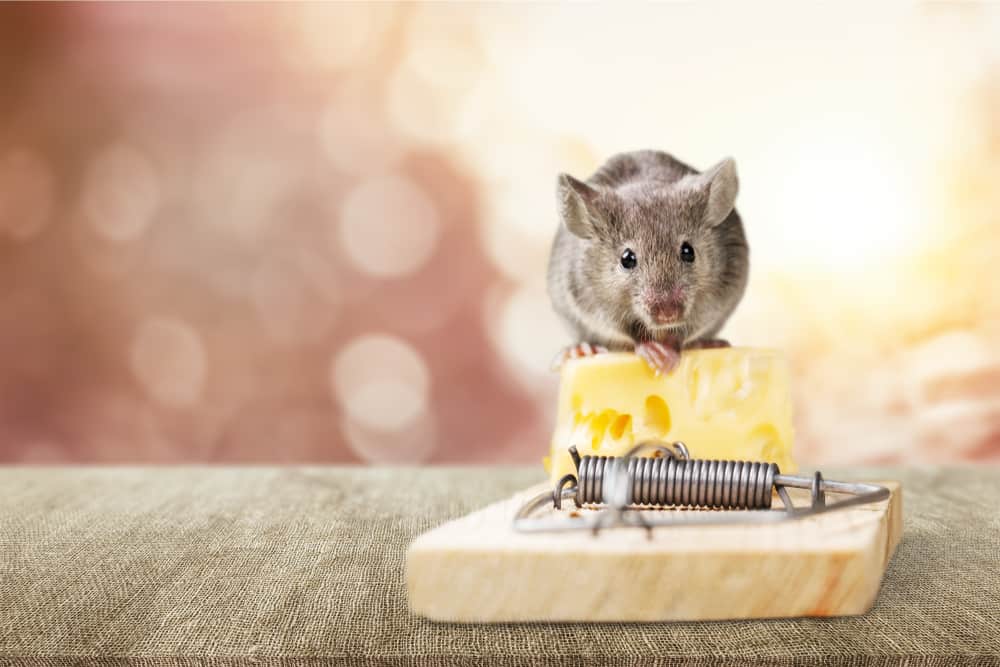Types of Stinging Insects
Did you know that stinging insects send more than 500,000 people to the emergency room each year?
Stings from wasps, hornets, and bees often happen because they become aggressive, defensive, or territorial. As many homeowners know, they can really be a pain in the — you know what.
But wait, you’re probably thinking that only people who are allergic to stinging insects get sent to the ER. You’re wrong! Anyone can get a sting that can induce very serious symptoms so watch out and keep reading.
How Many Stinging Insects Are There?
According to Purdue University, there are over 29,800 species of stinging insects. This includes ants, bees, and wasps. Of all of them, ants have the lowest medical risk, wasps the greatest. Let’s run down the different types of insects that can bug you, literally.
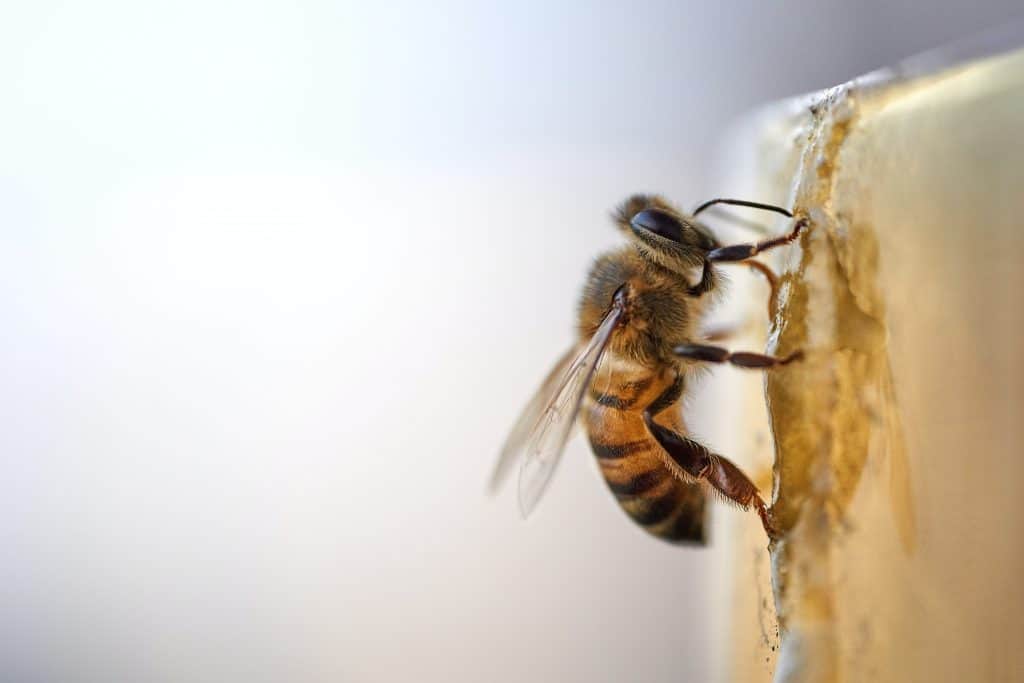
With summer upon us, we are longing for some much-needed outdoor time with loved ones. Although we are all craving sunshine and backyard cookouts, we need to be careful when gardening or walking barefoot because of stinging insects. Nothing would ruin a nice day like having to visit the emergency room, but it happens to nearly 500,000 people each summer.
To be proactive, it is recommended to contact a licensed pest control professional to remove potential threats on your property. If you need to be reactive to a situation and are experiencing physical symptoms, please contact a medical professional immediately.
European Hornet
The European Hornet will sting you over and over again. Ouch! These suckers look like wasps but are far more aggressive. They usually live in colonies that can house 400 members. Maybe you’ve seen them in tree hollows, wall voids, or abandoned beehives.
What’s even more terrifying is that European Hornets are active day and night. Most other bugs are dormant after sunset. If these hornets slept at night, it would be easier to get rid of them, but due to their 24-hour cycle of stinging — you can’t.
Even if you were to remove them at night, they would still be attracted to the flashlight
Don’t worry though! The best way to protect your home is to change exterior lights to yellow bulbs.
Paper Wasp
Unfortunately, hornets aren’t the only stinging bugs attracted to sweet smells. Nectar is the main thing that Paper Wasps consume. They want it all the time. They usually hang around homes that have windows open. If you’re baking a fresh batch of cookies or an apple pie, Paper Wasps will come flying.
Because of their social nature, they’re tolerant of humans, after all, you’re technically the ones that feed them. Paper Wasps are considered a beneficial wasp species (yes, those exist) because they control pesky insects.
They’ll attack if their nest is threatened or touched. I’m sure you can understand that. I mean who wouldn’t want to protect their own. Still, their sting can be very painful. Paper Wasps build their homes in a hammock shape on roofs and tree branches. They look like they’re made of paper and are sometimes see-through. That’s where the name comes from.
The best way to prevent infestations is to keep greenery trimmed, pick fruit, and seal cracks to prevent them from entering your home.
Yellowjacket
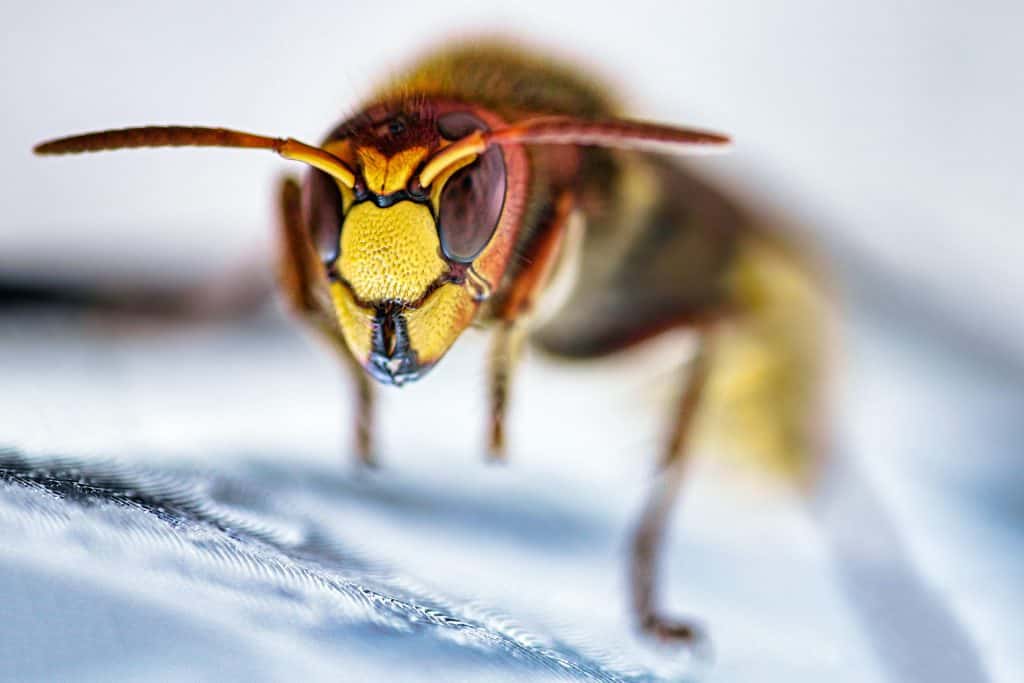
I’m sure at this point you’re wondering why we haven’t mentioned the vicious and common Yellowjacket. You know the ones people run from? You know how aggressive and territorial they are. Because you can find almost everywhere you can’t get away from them even if you tried.
Yellowjackets build their homes in cavernous areas such as attics and the ceilings of garages. One nest could contain over 4,000 Yellowjackets. Their hives can be as big as basketballs.
Just like hornets, they love to come out in late summer when most of us are enjoying the cooler weather. Likely you’ve tried having a picnic and been invaded by these flying bullies.
The best way to deal with them is to leave it to the experts. Call a local exterminator if you spot a hive near your home.
Asian Giant Hornet
Two words: Murder Hornets. The news media had us believing that the Asian Giant Hornet was going to be the next plague of locusts. Thankfully, it hasn’t been…yet. Despite the fact they made it to the US, Asian Giant Hornets are most commonly found in Asia, naturally. They are especially prevalent in China and Japan
They can be up to 2 inches long. On top of that, their wingspan can measure up to 3 inches. And talk about running away from Yellowjackets!
Asian Giant Hornets build their homes right under our feet. Their subterranean nests are hard-to-reach places like tunnels and rotted tree roots. Don’t go sticking your hand in a murder hornet nest. Do-it-yourself nest removal is not recommended. Again, your best bet is to call a professional.
Carpenter Bee
Carpenter Bees closely resemble bumble bees and tend to live up to three months. These bees are low threats to your backyard as they would rather spend time creating their nests in sound or decaying wood but can frequent flower beds from time to time.
Female Carpenter Bees are more likely to sting than males because some of them do not even have stingers, but males can become territorial and can hover if they feel threatened. For the most part, these bees are actually viewed as beneficial for pollinating various plants and crops.
Here’s how to identify and manage Carpenter Bees:
Appearance: Yellow or black, robust, oval-shaped
Potential to Sting: Low, but can still occur
Biggest Risk: property damage of wooden structures
How to Manage: relocation
Recommendation: Contact a professional beekeeper
Africanized Killer Bee / Killer Bee
The Africanized Bee (better known as the killer bee) was first discovered in Brazil and traveled northbound through Central America in the 1950s.
Africanized Bees are commonly found in the southwestern United States. The reason these bees get a killer wrap is due to their aggression, desire to sting, and ability to chase people for long periods of time.
Because these bees are more dangerous than most, do not mess with them! Contact a licensed pest control professional to verify the infestation.
Here’s how to spot and deal with Africanized Killer Bees:
Appearance: Golden-yellow with dark brown bands
Potential to Sting: High
Biggest Risk: Similar appearance to honeybees
How to Manage: Search for signs of the nest in holes in the ground and other subterranean places.
Recommendation: Contact a professional and do not approach a nest if one is nearby.
Bumblebee
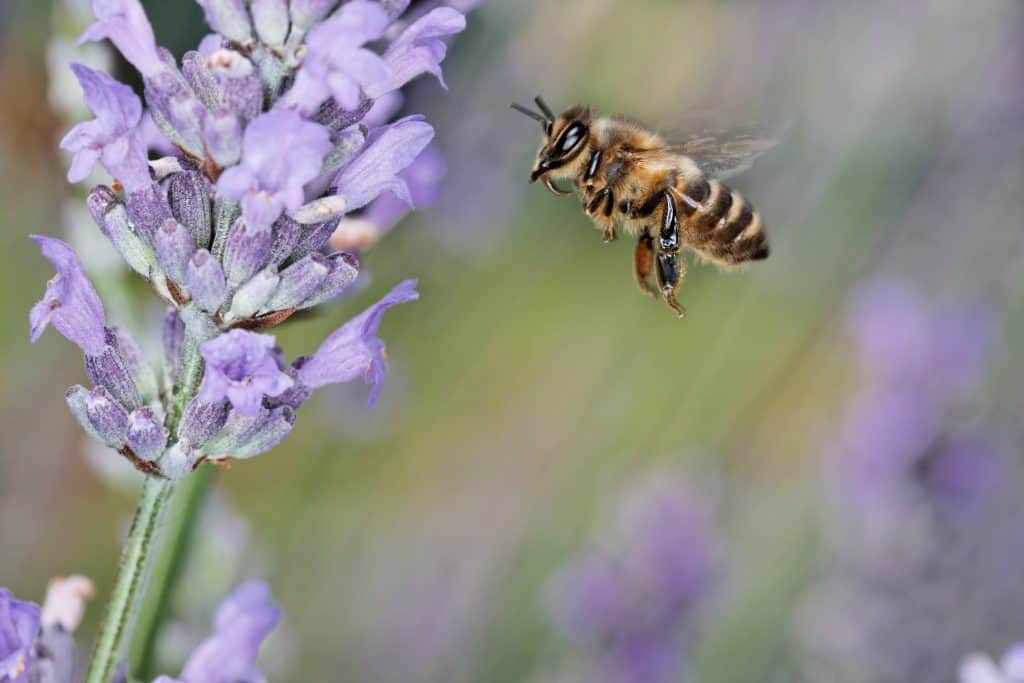
Bumblebees are probably best known for their plump and fuzzy appearance, but there is much more to these bees than meets the eye.
There are almost 40 species of Bumblebees that can be found in the U.S. and Canada and are commonly seen as non-threatening because they help pollinate various plants and crops. With that said, Bumblebees are still capable of stinging and their stings are known to be painful when defending their nests.
These social insects live in smaller colonies that build their nests out of pollen and typically nest underground, in rodent holes, thick grass, near decks, and patios, or even other abandoned nests. Remember, don’t bother them and they won’t bother you.
Here’s how to know if you have a Bumblebee on your hands:
Appearance: Black with yellow stripes, oval-shaped
Potential to Sting: Medium
Biggest Risk: aggressive tendencies when defending their nests
How to Manage: Monitor for nests every summer through fall and never block nest entrances.
Recommendation: Contact a professional beekeeper for relocation information. Bumblebees are an important part of our ecosystem and should never be exterminated if they can be helped.
What Insects Have the Worst Stings?
Given everything we listed above, as well as the many stinging insects we failed to mention here, it could be hard to tell which have the worst stings. Bees are not the only type of insect that can sting; in fact, hornets and wasps are more likely to sting and their stings are noted as much more painful.
Some insects, including the bald-faced hornet and paper wasp, have a low-to-medium potential to attach when they are defensive. Excluding the Africanized killer bee, the Yellowjacket is perhaps the most aggressive of the stinging insects and can be found swarming around trash bins and picnic tables.
Now that we know more about bees, hornets, and wasps, let’s rank them based on likelihood to sting and aggression level:
Most likely to sting: Africanized killer bee
Highly likely to sting: Yellowjacket, European hornet, Bald-faced hornet
Somewhat likely to sting: Bumblebee, Honeybee
Least likely to sting: Carpenter Bee, Paper Wasp, mud Dauber Wasp
What Now?
There is certainly a lot of information to digest here! As warmer weather approaches, use your best judgment when doing yard work or enjoying your outdoor time with loved ones. Always contact a professional for extermination or relocation needs, especially if you are unsure or uncomfortable with how to handle your insect situation.
Stay safe, healthy, and happy this summer!

